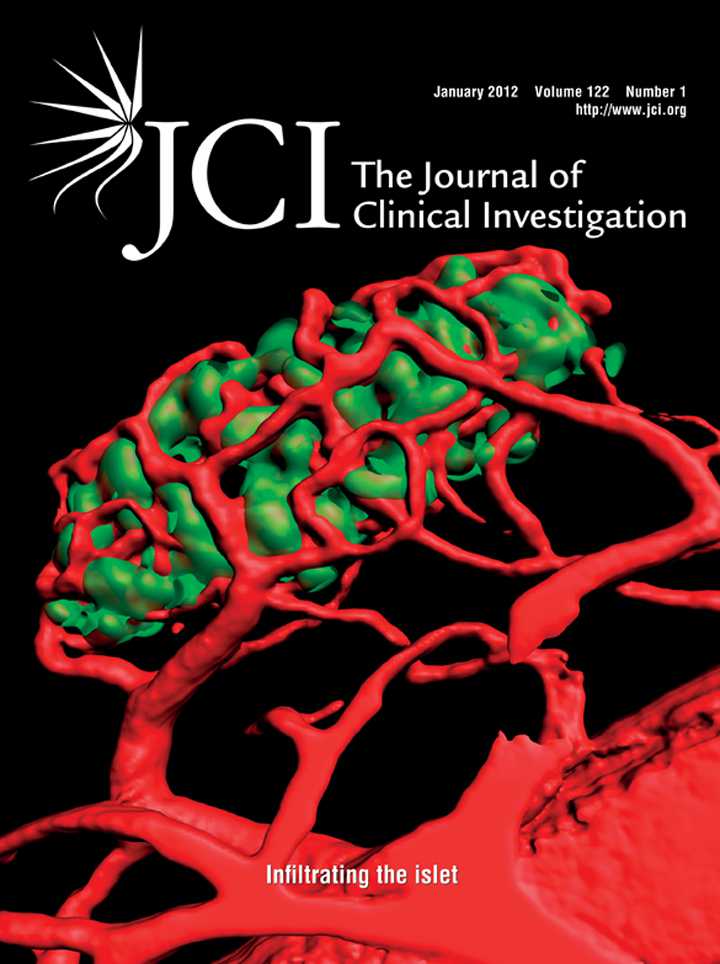JCI: 痉挛基因reticulon2导致神经细胞变性
2012-01-29 MedSci MedSci原创
在期刊Journal of Clinical Investigation上,一个国际科学家小组,由剑桥大学Evan Reid博士和迈阿密大学Stephan Zuchner博士所领导,报道了基因reticulon2突变导致一种遗传性痉挛性截瘫(HSP),该基因位于染色体19上。HSP以腿进展性强直和挛缩为特点,由轴突的选择性和特异性变性所造成。 该小组在基因reticulon2上确定了三个突变作为

在期刊Journal of Clinical Investigation上,一个国际科学家小组,由剑桥大学Evan Reid博士和迈阿密大学Stephan Zuchner博士所领导,报道了基因reticulon2突变导致一种遗传性痉挛性截瘫(HSP),该基因位于染色体19上。HSP以腿进展性强直和挛缩为特点,由轴突的选择性和特异性变性所造成。
该小组在基因reticulon2上确定了三个突变作为一种HSP的病因--在其中一个病例中,这种突变包括整个基因的删除。此外,研究人员还指出基因reticulon2与另一个基因spastin相互作用。这个基因的突变引起最常见的遗传性痉挛性截瘫。
reticulon2基因编码一个浆膜蛋白(reticulon protein),此蛋白是一个蛋白质家族中的一员,在内质网成形中起关键作用。内质网是一个相互连接的膜和小管的网络系统,延伸至几乎所有细胞中的整个细胞质。
内质网有几种功能,包括蛋白质合成、钙信号和细胞其他组成部分的调节。最近的数据表明,膜是参与蛋白质合成,而管是专门用来执行其他功能。
这项新研究提供了目前最直接的证据,内质网如何成形和形成的缺陷可能是轴突变性的基础。当轴突退化,信号无法通过神经细胞,导致中枢神经系统内沟通崩溃。这在神经系统变性疾病中是常见的,如多发性硬化症。
"我们的工作突出了重要的新疾病机制,这可为我们研究轴突在诸如HSP样的毁灭性疾病中如何受损提供了一个平台,甚至是在多发性硬化症中,此病在某些情况下与HSP非常相似", Reid博士这样解释,他是一个韦尔科姆基金会临床科学上的高级研究员,"但我们一定不能忘记这项工作可能立即直接有利于受HSP影响的家庭,此发现为他们开辟了遗传咨询和检测的可能性"。(生物谷bioon.com)

doi:doi:10.1172/JCI60560
Mutations in the ER-shaping protein reticulon 2 cause the axon-degenerative disorder hereditary spastic paraplegia type 12
Gladys Montenegro, Adriana P. Rebelo, James Connell, Rachel Allison,Carla Babalini, Michela D'Aloia, Pasqua Montieri, Rebecca Schüle, Hiroyuki Ishiura,Justin Price, Alleene Strickland, Michael A. Gonzalez, Lisa Baumbach-Reardon,Tine Deconinck, Jia Huang, Giorgio Bernardi, Jeffery M. Vance, Mark T. Rogers,Shoji Tsuji, Peter De Jonghe, Margaret A. Pericak-Vance, Ludger Sch?ls, Antonio Orlacchio, Evan Reid and Stephan Züchner
Abstract: Hereditary spastic paraplegias (HSPs) are a group of genetically heterogeneous neurodegenerative conditions. They are characterized by progressive spastic paralysis of the legs as a result of selective, length-dependent degeneration of the axons of the corticospinal tract. Mutations in 3 genes encoding proteins that work together to shape the ER into sheets and tubules - receptor accessory protein 1 (REEP1), atlastin-1 (ATL1), and spastin (SPAST) - have been found to underlie many cases of HSP in Northern Europe and North America. Applying Sanger and exome sequencing, we have now identified 3 mutations in reticulon 2 (RTN2), which encodes a member of the reticulon family of prototypic ER-shaping proteins, in families with spastic paraplegia 12 (SPG12).
These autosomal dominant mutations included a complete deletion of RTN2 and a frameshift mutation predicted to produce a highly trunc-ated protein. Wild-type reticulon 2, but not the trunc-ated protein potentially encoded by the frameshift allele, localized to the ER. RTN2 interacted with spastin, and this interaction required a hydrophobic region in spastin that is involved in ER localization and that is predicted to form a curvature-inducing/sensing hairpin loop domain. Our results directly implicate a reticulon protein in axonopathy, show that this protein participates in a network of interactions among HSP proteins involved in ER shaping, and further support the hypothesis that abnormal ER morphogenesis is a pathogenic mechanism in HSP.
本网站所有内容来源注明为“梅斯医学”或“MedSci原创”的文字、图片和音视频资料,版权均属于梅斯医学所有。非经授权,任何媒体、网站或个人不得转载,授权转载时须注明来源为“梅斯医学”。其它来源的文章系转载文章,或“梅斯号”自媒体发布的文章,仅系出于传递更多信息之目的,本站仅负责审核内容合规,其内容不代表本站立场,本站不负责内容的准确性和版权。如果存在侵权、或不希望被转载的媒体或个人可与我们联系,我们将立即进行删除处理。
在此留言








#JCI#
55
#RET#
66
#痉挛#
46
#变性#
49
#神经细胞#
43